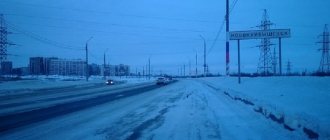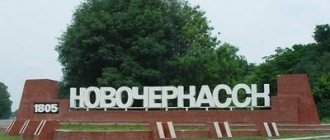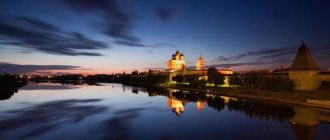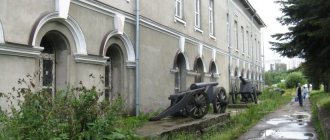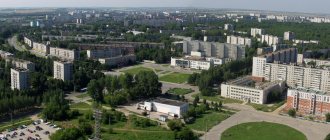Historical facts of the city of Novokuybyshevsk
- In the second half of the 18th century, the Orlov count's estate was built on the site of the modern city.
- At the beginning of the 20th century, after the construction of the Samara-Zlatoust railway, the Lipyagi station appeared.
- During the Civil War, battles took place between the Bolsheviks and the Czechoslovak Corps in the area of the Lipiagi station.
- In 1932, Privolzhskaya Biofactory No. 6 was built near the railway line.
- In 1946, construction of an oil refinery began, and a workers’ settlement was located nearby.
- In 1951, the first refinery units were launched and the Novokuibyshevskaya CHPP was built.
- In 1957, the Kuibyshev synthetic alcohol plant was launched - the largest chemical enterprise in the region.
- On February 22, 1952, the workers' village at the oil refinery was transformed into the city of Novokuibyshevsk.
- In 1965, the Novokuybyshevsk Petrochemical Plant was founded - the largest producer of monomers for rubber in Europe.
- In 1992, Novokuybyshevsk included the Mayak village, 14 years later - the Granny microdistrict.
- In 2022, the city's population will reach 103 thousand people.
AROUND AND AROUND
There are many terrible statistics about the city of Novokuibyshevsk, which is located just twenty kilometers southwest of Samara. They say that the city in the region is the second most dangerous after Chapaevsk, men here barely reach 59, and the content of any chemical heresy in the air exceeds all permissible limits. And you can walk it up and down in fifteen minutes, but if you walk longer, you will start to feel sick. In general, all these figures evoke an extremely gloomy mood.
However, DG continues to believe in the best and look even in the most provincial towns of the region for something that can be pleasing to the eye of a corrosively curious tourist. And he finds it!
We have already visited Syzran, went to Chapaevsk, and now we have returned from Novokuibyshevsk. Our guide around the city this time was a tablet with fast mobile Internet from MTS, a company that kindly shares communications and gadgets with us. Residents of the city helped us plan the route in advance - the user Good Evening took the most active part in this, for which we express special gratitude to him.
general information
Novokuibyshevsk really belongs to the Russian cities with the highest level of air pollution, and its history itself is to blame.
In 1904, on the site where the city is now located, the Lipyagi railway station , near which a brick factory was built. But the country only needed oil for more bricks, and in 1951 the first oil refinery units began operating here. The greater the production of petroleum products, the more impossible it was to breathe deeply in Novokuibyshevsk.
The population of Novokuibyshevsk is taken into account very carefully; as of January 1, 2015, 105,007 people lived there We dare to suggest that now there are even fewer of them - those who have completely deteriorated from the bad ecology have probably moved to the more prosperous Samara, which, let us remind you, is located 20 kilometers to the northeast. Every year, approximately 1,000 native Novokuibyshevites go in search of happiness to other cities in the region.
Museum and history of the city
The most logical place to take a first look at the true face of Novokuybyshevsk is at the Museum of the History of the City, located on Belinskaya Street, 14 . In order to get there, you need to go left from the bus station along the street of the 50th anniversary of the oil refinery, walk through Lenin Square past the Palace of Culture and turn left again.
The Museum of the History of the City appeared in Novokuibyshevsk in 1977 , on the 25th anniversary of the city. Initially it was located on Mironov Street, but then a two-story building on Belinsky Street was allocated for it. Traditional architecture of the 40s , an exhibition area 702.4 square meters, 18 thousand exhibits and more than 80 City History Museum is in numbers.
The museum itself is naively sweet. It is like this because it was not possible to meet anyone there except the museum employees, and even they, breathing heavily, dragged a cute fluffy Christmas tree into the hall. There were no guides ready to begin fulfilling their professional duties either - they were all called by Thalia and Melpomene and were preparing for the New Year's concert, which promises to bring together many young local historians at the museum. We were urged to wait for the guides for a couple of hours, but we refused and began to study the exhibition on our own. Of course, under the strict supervision of ticket attendant Lyubov Valentinovna , who forcibly allowed us to take photographs.
The first hall tells in detail about the formation and development of the city's petrochemical industry.
In 1946, construction began on an oil refinery, which promised to become the largest in the USSR. In September 1951, at the refinery , and the village around it grew to 14 thousand inhabitants. Light, heat, water and telephone communications came here. In honor of this memorable event, a couple of telephone sets of that time and several more costumes of the first workers of the oil refining industry are on display in the hall - they look out of plastic windows, as if in a horror film. And the number of flasks for storing catalysts for all kinds of petrochemicals is countless.
On February 22, 1952, the city of Novokuibyshevsk became a real settlement - the Presidium of the Supreme Soviet of the RSFSR decided that this was a promising industrial center, and not some oil refinery village on the outskirts. Carefully folded tapestries with the grateful gaze of Vladimir Ilyich Lenin occupy their special place among other exhibits.
In the second hall, Novokuibyshevsk tries to open up to the visitor from a completely different side: the museum staff reminds that there is something else here besides oil. Some craftsmen were able to put into production the creation of dairy products (JSC Novokuibyshevskmoloko) and clothing production (JSC Novokuybyshevsk Garment Factory), and Novokuibyshevsk was also a conveyor belt for the production of talented artists.
Up the stairs, past portraits of prominent managers and straight along the corridor - here the tourist is greeted by a traditional fork of three paths. They lead, of course, to three exhibition halls: “Ring of Fire” , which glorifies valiant warriors; “Parallels of Time” , demonstrating the life of Novokuibyshev apartments, shops and school classrooms of the 60-70s; and a hall telling about the life of ordinary peasants near the Lipyagi station , which was in this place long before Novokuibyshevsk. Almost all the exhibits in the hall are speaking, and the glowing eyes of our guide Lyubov Valentinovna begged us to listen to all the songs of the peasant stove from beginning to end.
When leaving the City History Museum, don't forget to leave a review. The looks of gratitude from the museum staff are worth a few kind words. And the entrance ticket here costs 30 rubles, although they sold me two and a camera at once.
Where to go, what to see
Leaving the museum, we head back to Lenin Square, straight to the building of the Palace of Culture.
Lenin Square and the Palace of Culture are the concentration of the cultural life of Novokuibyshevsk, the center to which all roads and routes lead. This is probably why mobile Internet reception from MTS is excellent here: 44 Mbit/s in 4G and 4 Mbit/s in 3G.
While we are moving up Belinsky Street , we pass by the stele honoring those who died in the line of military duty, we admire the topical graffiti about the self-interest of ladies and the ardent hearts of gentlemen and go out onto a spacious square, carefully cleared of snow.
We pass by the Retro Hotel , where a night costs 2,700 rubles for a single room. Then we go a little more hastily - such prices only mean that we need to move back to Samara at least at 10 pm.
At the Palace of Culture they are also working for the glory of the upcoming festivities - these days Novokuibyshevsk gives the impression of a lady getting ready to go out into the world. The Palace of Culture opened its doors to the townspeople back in November 1957 , and to this day it houses 47 rooms for clubs and rehearsals, a fireplace room with 30 seats, a small hall with 120 seats and a large hall with 646 seats.
Special attention should be paid to the large hall - stop by and admire the huge shining chandelier that has been hanging here for half a century. The decoration has its own history - before the opening of the cultural center in 1957, the chandelier hung at the Novokuibyshevskaya station, but everything there was somehow everyday and unofficial. Quite quickly, enthusiastic citizens settled the issue of transporting the structure to the Palace of Culture , transported the holding winches and all three hundred light bulbs. This chandelier was filmed in a documentary by one of the federal channels - the employees of the cultural center report this exclusively in a reverent whisper.
But still, the main decoration of the Palace of Culture is the theater-studio “Gran” , first floor, to the right along the corridor and to the end, decisively past the offices of directors and artistic directors. In the chamber hall with 100 seats, the magic happens that makes the theater-studio “Gran” a winner of all possible and impossible theater awards. I think the national Golden Mask award tells you something. As well as the fact that every week the public, which has already become “their own”, flocks from Samara to Novokuybyshevsk.
The troupe consists of only six actors, but here it would be more correct to say that there are six of them: Yulia Bokuradze, Alina Kostyuk, Daniil Bogomolov, Sergei Pozdnyakov, Alexander Ovchinnikov and Lyubov Tyuvilina . Remember the names that thunder from Novokuybyshevsk throughout the whole country.
Since 2011, the artistic director of the studio theater is Denis Bokuradze. It was under him that bizarre metamorphoses began to happen with “Fringe” - either a play based on Sartre would be staged, putting the whole audience into reverie, or medieval farces, or the strange, difficult to understand, but which became a favorite “Tanya-Tanya” .
For Christmas, for the second year in a row, the play “The Ox and the Donkey in the Manger” , which Denis Bokuradze himself tells us about:
— What else could a Christmas parable be about? Of course, about the eternal - Love, Goodness and Miracle. We invite spectators from ten years to infinity to the performance, although many say that this is a performance for children. I don’t agree with this - after all, we show the birth of Jesus and how an ox and a donkey watch him, we ask questions and we talk with the viewer about the mystery and greatness of Christmas.
The play “The Ox and the Donkey in the Manger” will be shown Gran Studio Theater on 4 and 6 – if the mysterious annotation by the director and artistic director Denis Bokuradze and truly enthusiastic reviews from the audience aren’t enough for you, then I just don’t know what you want . Something is happening in Novokuibyshevsk that really goes beyond the boundaries of the reasonable and, even more so, the provincial, beyond the boundaries of the ordinary or the garishly theatrical. Just come and see for yourself.
We leave the theatrical concert complex “Palace of Culture” and move further along the pedestrian street Mironov . We pass by the Eternal Flame , blazing in the wind, and, before reaching the road, we turn left - now we are heading to the Central Library named after A.S. Pushkin, which has existed in its current form since 2000.
Novokuibyshevsk generally diligently hides the fact that it is an intelligent city - in total there are two central libraries and six branch libraries. The one we need is located at: Bibliotechny proezd, 1.
In the library they are greeted by a bust of Alexander Sergeevich Pushkin and a stern woman at a table. Yulia Komarova, smiling and talkative, guides us through all four floors
— In general, in my opinion, our library has everything that an institution of this kind should actually have. Everyone is used to the fact that the library is a dusty, godforsaken place where you can do nothing but die of boredom. We have our own cafe, exhibition hall, planetarium... Community center, electronic library, free Wi-Fi zone, catalogues, traditional reading room, conference place... People of all ages come here, they read, learn Russian for free. They play board games. They think and have fun,” says Yulia, busily picking up keys to different doors and moving at lightning speed from site to site.
I personally see a four-story library for the first time, this time. This is also the first time I’ve come across such a liberal library policy - take a book or periodical and wander wherever you want, that’s two. I really wanted to spend my childhood in Novokuybyshevsk and go here every day after school. It's beautiful, quiet, and hundreds of books are waiting on the shelves.
The speed of mobile Internet from MTS in the library is also impressive: 47 Mbit/s on a 4G network and 8 Mbit/s on 3G. This speed will allow us to download in a matter of seconds all the rarities of world and Russian classics located on the virtual shelves of the “Mobile Library” from MTS, which appeared here in September of this year. We read the QR codes from the spines and hit the road lightly.
Leaving the library with sadness, we wander along Mironov Street , cross Chernyshevsky Street , go left and take any trolleybus that takes us to the only modern shopping center in Novokuibyshevsk - City Park. There are plenty of shopping centers in Samara, so we won’t go into this embodiment of a consumer’s dream. We also pass by a market where they have everything - they even sell carpets. We post photos with acid monkeys on the Internet - fortunately, the mobile Internet from MTS is good here: the speed reaches 15 Mbit/s.
We quickly move on, our goal is the temple in honor of St. Seraphim of Sarov the Wonderworker on the Lower Square . We walk a little along Pobeda Avenue - and now we are already there.
The Church of Seraphim of Sarov was officially built in 1999 - it was erected by the architect Anatoly Shoshin. Behind the wide door you will be greeted by all the wealth of the Russian Orthodox Church - in the best traditions.
— Will you take photographs? - a creaking granny in a headscarf sneaks up to me unnoticed.
“Well, I would like to,” I answer. - Is it possible here?
- Do you go to church?
“No,” I say.
- Baptized?
- Yes.
- Do you wear a cross? – the caring woman continues the interrogation.
- No.
“When you start wearing it, then you’ll be able to take pictures!” – the granny grunts in response. I move away from her, thoughtfully, and still remove the lens cap. Come what may, I hope that up there they all see that I am taking risks for a good cause.
Another small woman in a headscarf approaches me amid the incessant clicking of the camera shutter. Her name, as it turned out, is Tatyana Tsvetkova , here she sells candles and registers prayers. She was in the church from the very first service, which actually happened in 1991 - it was then that the half-forgotten premises of the bread store were allocated for the needs of the parishioners:
— From the moment of its creation until September 27, 1991, Novokuybyshevsk was a godless, thoroughly socialist city with all that it entails, as they say. And then they allowed to build churches all over Russia, and our townspeople woke up from this dark sleep and began to ask to build a temple in Novokuibyshevsk. You know what they say: “Without God the road is wide,” but people only realized that it leads to nowhere. The first service was held right in the premises of the bread store, but more and more people came - they began to expand the church, everyone was moved to a utility room, and the store began to be rebuilt. The service here never stopped - the choir sings, incense burns, and in the background drills and hammer drills howl.
Initially, they wanted to call the church the Church of the Exaltation - after all, the first service on September 27 was held in honor of the Christian holiday of the Exaltation of the Life-Giving Cross. But the name did not catch on, and it was decided to call the temple the Church of Seraphim of Sarov - a piece of the saint’s relics is securely encapsulated in one of the icons. If you are in Novokuybyshevsk, be sure to come here - the first church, which filled the hearts of hard-working Novokuybyshevsk residents with faith, is worth even a cursory glance from a tourist.
We leave the church and follow to the left across the road - thus, we exit onto Kommunisticheskaya Street. Fifteen minutes of walking, a last look at Lenin Square, to which all roads lead in Novokuybyshevsk, to the right past the youth theater, located in the atmospheric building of the 20th Party Congress cinema, built in 1956, and here it is, the final destination of our journey: Dubki Park .
The Dubki Park appeared in Novokuibyshevsk almost from its very foundation - on paper in 1960, but in fact in 1964 - it was then that the territory was densely planted with trees and shrubs, flower beds were laid out and benches, trash bins and street lighting were installed. At the end of the 60s, the Novokuybyshevsk Petrochemical Plant took responsibility for the park, and paved paths, a stage in an oak grove, and a summer cinema appeared here. The park featured the following attractions: “Boat”, “Autodrom”, “Traffic Light” and “Ferris Wheel”. As you can see, these rarities, which brought happiness to children back in socialist times, are still here today.
Then the darkest times came in the history of Dubki Park - local residents say that in the late 80s there was a real backwater here. Apparently, the proximity of the bus station, from which gloomy lovers of alcoholic liqueurs wandered here, played a role. And the general situation in the country was no longer conducive to carefree Soviet initiative and children's laughter.
On March 1, 1996, the Dubki Park in order - they replaced the fencing, which had been badly damaged by life, carried out a major overhaul of asphalt paths and lighting, reinstalled benches and trash cans, painted up the broken-down attractions and installed a couple of new ones. In 1998, “Dubki” was opened on a grand scale - the oldest park in the city overcame the crisis and returned renewed and even greener.
Today, the park has an alley of coniferous trees, a dendrological mini-museum, a rose garden, a sirengarium, a zoo corner with squirrel feeders, and even a memorial sign “To the Victims of Political Repression,” which appeared here in 2008 . Admiring all this was impossible due to unbearable weather conditions, but the summer “Oaks” will definitely greet you with bright colors and fragrance. In the meantime, we will sit down on the path to google the schedule of buses going back to Samara: the speed of mobile Internet from MTS in the Dubki park reaches 10 Mbit/s - we can still afford it.
Where to stay and eat
After leaving the Central Library, we went to Mironov Street in search of food. As it turned out, it is pedestrian only up to house number 10 , and if you cross the road across Chernyshevsky Street, you will immediately come across a cafeteria (here for some reason with two “r”) with the ironic name “Khoma” . The window was slightly open, and the smell was tempting: we couldn’t resist and looked inside.
Inside we were greeted by a small room with four tables - as it turned out, it was more likely not a cafeteria, but a roadside diner with the opportunity to “sit down”. Every five minutes a new car appeared on the side of the road, from which someone quickly flew into Khoma , received the ordered burger or shawarma with tea, and just as quickly left the space.
Our order:
— Solyanka – 100 rubles
— Olivier salad — 50 rubles
— Bread in the amount of two pieces – 4 rubles
Total: 154 rubles
Solyanka was rich and tasty, and there was an impressive amount of meat products floating in it: sausages, smoked sausage and even a piece of real meat! Not too fatty, with pickles and potatoes, generously flavored with sour cream, sprinkled with herbs and garnished with a slice of lemon - for this price the dish is more than acceptable, and most importantly - satisfying.
The Olivier salad caused less joy - instead of the expected peas, there was corn and half a ton of fresh onions. The mayonnaise was poured so generously that you could wash your face with it.
The bread was soft and fragrant, shaped into thick slices - in general, in the Homa cafeteria generosity finds its expression in everything.
General impression of the city:
Novokuibyshevsk is capable of making a pleasant impression on tourists, we declare this publicly. Cozy alleys, Soviet neoclassicism and the desire to demonstrate all the best that history has bestowed on the city add up to the overall picture of a quiet provincial town living its measured life.
There are few cars here, we didn’t smell any chemical smell, but this is most likely due to the free Volga wind, which carried the smell of the industrial zone somewhere far away on its shoulders.
The city can really be explored on foot in about forty minutes, but if you go beyond the tourist route formed by the streets of Kommunisticheskaya, Leningradskaya, 50th Anniversary of the Oil Refinery and Pobeda Avenue - and you will be greeted by a series of unsightly-looking “Khrushchev” buildings and even sadder new buildings of the era nineties. But this is how things are in any provincial city in Russia - outside the historical center, the ugly face of a typical building awaits you, grinning.
Territorial structure, layout of Novokuibyshevsk
The territory of Novokuibyshevsk occupies 264.40 km². The city is located on a hill and is clearly divided into residential and industrial parts. A satellite map of Novokuibyshevsk shows that the city's residential area is mainly built up with multi-apartment high-rise buildings.
On the outskirts there is a private sector, consisting of the remnants of villages that were here before the appearance of the city. This can be seen on the map of Novokuybyshevsk with houses. Today the urban district includes: 5 towns, 2 villages and one microdistrict.
Geographical characteristics
The city is located on the left bank of the river. Volga, at a distance of 20 km southwest of Samara. The area of the city territory is 86 km2. Novokuibyshevsk forms an urban district with an area of 264 km2. The distance to the Volga River is 6 km.
The climate is characterized by an average level of continentality. Winter is relatively frosty. In January, the average monthly temperature is minus 12.3 degrees, and in July - +21.7 degrees. Precipitation is moderate, but closer to insufficient. 445 mm of them fall per year. Droughts occur in summer. However, it is more humid here than in the lower part of the Volga region.
The coldest month is January, and the hottest month is July. In winter there are frosts down to -30. The weather in winter is often uncomfortable, with cold winds.
Transport connections of Novokuibyshevsk
The city's municipal transport network includes 16 trolleybus and 25 bus routes. Public transport is also represented by minibuses.
The city has a railway station “ Novokuibyshevskaya Station ” and three additional stations serving regional electric trains: “Molodezhnaya”, “Lipyagi” and “1084 km”.
In the village of Russkie Lipyagi on the Krivusha River there is a small river station.
Routes to Samara, Saratov, Syzran, and Oktyabrsk pass through the Novokuybyshevsk intercity bus station.
The main highway - Pobedy Avenue - outside the city limits turns into Samara Highway.
Novokuibyshevsk Employment Center
The employment center of the city of Novokuibyshevsk consists of a staff of 23 people. Their average salary is 16,311 rubles. This institution is located at the address: 446 200, Novokuibyshevsk, Samara region, st. Sovetskaya, 6.
The center's tasks include, first of all, providing comprehensive assistance to the unemployed population of the city of Novokuibyshevsk. This applies to both temporary employment and social adaptation of the unemployed, and even psychological support. The center provides assistance in finding suitable vacancies for the unemployed and provides a database of workers for local employers.
The center also provides assistance to self-employed unemployed citizens, including one-time financial assistance. Social payments are made to those who are recognized as unemployed.
Sights of the city Novokuibyshevsk
- Victory Memorial Park is located in an oak grove. The park area is quite large and includes three small lakes. City concerts and celebrations are held on the open-air summer stage. The park has a children's playground. Next to the park is the Neftyanik stadium, a key sports facility in Novokuibyshevsk, where competitions and regional events regularly take place.
- Dubki Park is the largest in the city. There is a garden of stone sculptures and several monuments. The park has children's attractions and a petting zoo, equipped areas for family recreation, and retail outlets are open in the summer.
- The Church in honor of the icon of the Most Holy Theotokos Tenderness is the largest Orthodox church in the city, repeating the design of the temple in honor of the Transfiguration of the Lord in the Diveyevo monastery. The construction of the church has not yet been completed, but services are held here on holidays.
Main Streets of Novokuybyshevsk
The main street, Pobedy Avenue , stretches across the entire city, smoothly turning into Samara Highway. On the street map of Novokuibyshevsk you can see that the avenue begins at Victory Park.
Moving up the main highway, you can get to the “ring”. This is the intersection of Pobeda Avenue with Dzerzhinsky Street, which runs through the entire city and leads to the Lipyagi station.
The residential area is separated from the industrial zone by Kirova Street. In total there are 325 streets in Novokuibyshevsk.
Located in the city center Lenin Square is located near the Dubki Park. The Theater and Concert Complex “House of Culture” and the City Administration stand on the square, and the youth club “Rus” is located across the road.
Latest job center vacancies
Vacancies for mid-2022 are varied, both in the nature of the work and in the amount of wages. The most common salary is about 11 thousand rubles, and this value is found even in qualified professions: emergency doctor, plumber, master, doctor, teacher, teacher, pharmacist.
Lower salaries for doctors, storekeepers, choir artists, ballet dancers.
Salaries in the range of 20–30 thousand are found in a third of vacancies, and places with salaries in the range from 11 to 20 thousand rubles are quite rare. Salaries over 20 thousand rubles. mainly characteristic of heavy work: welder, machine operator, turner, chemist, installer, accountant and site manager. The highest salary for a diesel locomotive driver is 31 thousand rubles.
About a third of the vacancies list part-time or part-time work, which indicates an unfavorable situation in the local labor market.
Economy and industry of Novokuibyshevsk
There are several large enterprises operating in Novokuibyshevsk, the main areas of which are:
- Petrochemistry and oil refining.
- Construction.
- Food industry.
- Light industry.
- Industrial waste disposal.
- Production and sale of rolled metal.
The most notable enterprises of the city are: Novokuibyshevsky Processing OJSC, Novokuibyshevsk Knitted Fabric Factory OJSC, Novokuibyshevsky Knitted Fabric Factory OJSC, Novitrek CJSC.
Most of the production is under the control of Rosneft.
